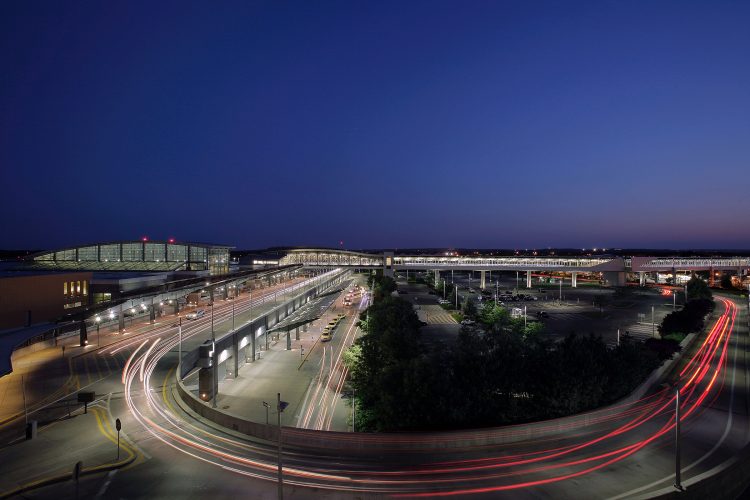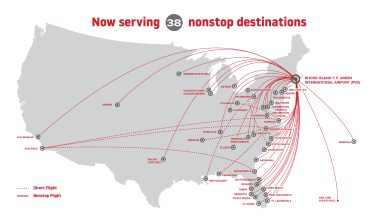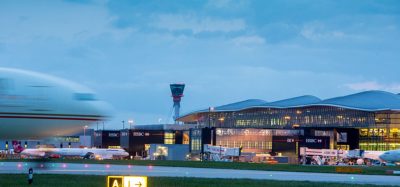How Rhode Island’s T. F. Green became America’s fastest growing airport in 2025
Posted: 10 September 2025 | Iftikhar Ahmad | No comments yet
Iftikhar Ahmad, CEO of Rhode Island’s T. F. Green International Airport, writes exclusively for International Airport Review, about how the airport has transformed into America’s fastest-growing airport this year, driven by strategic growth, smart investments, and a passenger-first focus.


Credit: PDX
Rhode Island’s T. F. Green International Airport (PVD) was the fastest-growing airport in the country earlier this year, according to U.S. Department of Transportation (USDOT) data. This change comes following a loss in passengers and destinations at the airport for a decade, from the mid-2000s to 2016. PVD has also been growing faster in the New England states for the last 18 months, based on data published by these airports on their websites.
PVD has also earned the distinction of being the most liked airport by passengers in Travel + Leisure’s annual survey in July 2025. This came just after The Washington Post included the airport in its top 10 best airports in the U.S., a month before, in June. This adds to a collage of 16 accolades the airport has received from international organisations since 2017. These wins include being named in the top 10 by Condé Nast Traveler in 2023. Together with four credit rating upgrades by Fitch and Standard & Poor’s in the last two years, these distinctions at the regional, national and international levels make PVD a model of airport transformation.
How did this mid-sized New England airport transform itself in such a short period? The answer lies in strategic growth, wise investments and a relentless focus on passenger experience.
Join us live: Shaping the Next Generation of Hold Baggage and Air Cargo Screening
Join us live for an insightful webinar on 11th December at 14:00 GMT, in collaboration with Smiths Detection, as we explore the strategic balance of operational efficiency, regulatory compliance, and sustainability in high-volume security environments.
This session offers a focused look into future-proofing your security strategy.
Key learning points
- Cost Reduction: Strategies to minimize bag travel time while simultaneously reducing operational costs.
- Regulatory Roadmap: Insights into the next wave of regulatory changes and their impact on future investment decisions.
- Sustainable Systems: Practical approaches to building sustainability into security systems and lowering the total cost of ownership (TCO).
- Scalable Solutions: Real-world examples of scalable systems supporting current airport growth and preparing for tomorrow.
Register now for expert insights, case studies, and actionable strategies on operational efficiency!
Operational coordination, staffing and training have produced a singularly focused team where passenger comfort is paramount.”
The addition of new routes
PVD has more than doubled its route map since 2016. Among the recently added or announced flights that will boost passenger volumes are new non-stop routes, such as JetBlue’s daily service to San Juan, Puerto Rico, and New York’s JFK Airport. Southwest Airlines also announced daily service to Nashville, Tennessee, which started in spring. Breeze Airways also launched two new routes from PVD: Daytona Beach, Florida, and Wilmington, North Carolina. In total, the airport now offers 38 non-stop destinations, including seasonal non-stop service to Los Angeles, California (LAX), and same-plane service to seven additional destinations, including New Orleans, Pensacola, Memphis and San Diego.


Credit: PDX
In addition, Breeze Airways has selected PVD as one of its largest hubs, where the airline plans to add international flights from the airport once it receives its FAA certification to fly transatlantic. These transatlantic flights, expected to start in 2027, will redefine PVD’s role within the Northeast air corridor.
Marketing and outreach
Rhode Island Commerce and the Rhode Island Airport Corporation (RIAC) collaborated on campaigns that reintroduced PVD as a user-friendly, modern airport, with a strong emphasis on local culture, convenience and new connectivity. The State also focused on destination marketing, which has helped balance the point-of-sale and directionality associated with flights.
Boston traffic and tunnel congestion play a significant role in passengers shifting to PVD.
A focus on passenger experience
PVD’s leadership anticipated growth and took early steps to ensure a smooth experience for passengers and airlines. The airport has developed a new customer service department staffed with 34 volunteers. It is also actively working on parking capacity, providing passengers with many options. The leadership is also working on expanding the restaurant options, with new restaurants opening and a few currently under construction.
By embracing change, expanding thoughtfully and prioritising the passenger experience, this regional airport has outpaced its peers and redefined its position in the national aviation landscape.”
Operational coordination, staffing and training have produced a singularly focused team where passenger comfort is paramount. A new, expanded and redesigned executive lounge is also currently under construction.
Infrastructure built for people
PVD is not resting on its laurels. Several infrastructure projects are in development to ensure capacity matches future demand.
Terminal expansion: A $125 million terminal modernisation project, scheduled to break ground in late 2025, focuses on increasing capacity to create an inviting space for passengers, making a positive and lasting impression on visitors. The international arrival area is being reconfigured to create space for elevating the level of service in the concourse. More seating will enhance passenger comfort, complementing the new restrooms.
Recent investments have enhanced the primary runway’s capabilities, including the installation of new de-icing pads and lighting systems, enabling more efficient operations year-round.
The Interlink station, which connects the airport to the MBTA commuter rail and rental car centre, is undergoing improvements to handle increased foot traffic and streamline transfers.
Attention to strategic details
Only an hour away from Boston’s major Logan Airport hub, PVD has strategically decided to use its smaller size to its advantage. For airlines, it is focused on keeping its cost a fraction of that at Logan. In an environment of low yields, lower cost per enplanement becomes a significant consideration of profitability.
For passengers, on the other hand, the airport offers a personal and local feel, featuring live music from Rhode Island artists, rotating art installations, and locally owned food vendors that distinguish the terminal from generic airport environments. While Logan Airport remains a central hub, many residents of southern Massachusetts and eastern Connecticut now prefer PVD due to its lower parking fees, quick walk to gates and minimal delays.
RIAC has prioritised collaboration with both legacy carriers and low-cost airlines, offering incentives for new route launches and promoting secondary cities underserved by larger hubs.
PVD’s leadership is also focused on its cargo segment of business. Freight traffic at PVD is also on the rise, thanks to facility upgrades and partnerships with regional logistics firms, an essential step in diversifying airport revenue streams.
Conclusion
T. F. Green International Airport’s 2025 is a case study in what can happen when vision meets execution. By embracing change, expanding thoughtfully and prioritising the passenger experience, this regional airport has outpaced its peers and redefined its position in the national aviation landscape.
Whether you’re a leisure traveller headed to Florida or a business flyer connecting to a global hub, PVD has proven it’s not just growing, it’s thriving. And as its next phase of transformation unfolds, the entire airport industry will be watching closely.
Join our free webinar: Beyond silos: How ecosystem thinking elevates the airport experience
In today’s complex aviation landscape, airports are moving beyond siloed operations to embrace a new era of collaboration. This webinar focuses on how leading airports are using ecosystem thinking to adapt, personalize, and continuously improve every touchpoint, boosting both passenger satisfaction and non-aeronautical revenue.
Date: 13 Nov | Time: 10:00 GMT
REGISTER NOW TO SECURE YOUR SPOT
Can’t attend live? No worries – register to receive the recording post-event.
Related topics
Air freight and cargo, Airlines, Airport construction and design, Airport development, Airport leadership, Intermodality, Passenger experience and seamless travel, Passenger volumes, Regulation and Legislation, Sustainability, Terminal operations, Workforce
Related airports
Related airlines
Related organisations
The Washington Post, Travel + Leisure, U.S. Department of Transportation (USDOT)


















